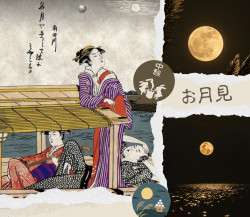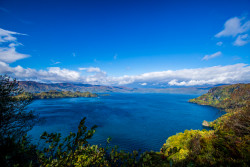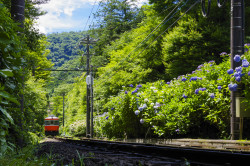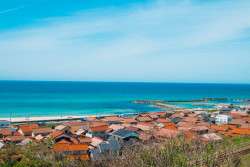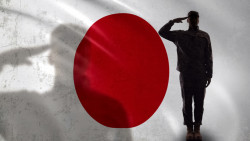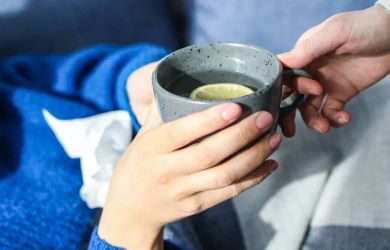
Originally published on metropolis.co.jp on April 2011

Photos by Alena Eckelmann


 Yamagata Prefecture’s impressive Sankyo Rice warehouses and mighty Mogami River set the scene for the highly popular 1980s Japanese TV drama and animated movie Oshin, about a poor girl turned successful businesswoman in Meiji-era Japan. The area has become something of a Mecca for fans of the series, but its rich historical legacy provides something for any inquisitive traveler.
Yamagata Prefecture’s impressive Sankyo Rice warehouses and mighty Mogami River set the scene for the highly popular 1980s Japanese TV drama and animated movie Oshin, about a poor girl turned successful businesswoman in Meiji-era Japan. The area has become something of a Mecca for fans of the series, but its rich historical legacy provides something for any inquisitive traveler.
The city of Sakata in the northwestern part of Honshu, on the shore of the Sea of Japan, looks a sleepy town these days. However, during Japan’s Edo and Meiji eras, it was a bustling center of commerce. As you stroll its historical streets, the old residences and warehouses bear witness to the past sagas of the rich merchant families and poor day laborers who lived and worked there.
Prominent among the town’s inhabitants were the Honma family. Once the most important merchant family in Sakata, they were reportedly even more powerful than the Sakai—the daimyo clan that ruled the area. Vivid expressions of Honma wealth and power are their homes—now among Sakata’s most visited attractions.
The former Honma family residence, built in the late eighteenth century as their main dwelling, merges the exterior elements of a samurai residence with the interior functionality of a merchant house. The Seienkaku residence (also built by the Honma family) is a two-story building which accommodated the Sakai daimyo during his inspection visits to Sakata. A closer look at what seems a traditional Japanese house reveals large glass windows with Western lighting and furniture.
It is unlikely that the fictional Oshin would have ever set foot in either of these places. Born into a very poor family at the beginning of the twentieth century, the seven-year-old girl in the internationally broadcast NHK TV drama and subsequent movie was sold by her father to work as a babysitter. But whether she’d have visited them or not, these treasures of Sakata have featured on the itinerary of fans making pilgrimage to the area.
Mogami River formed the passage for Oshin as she traveled towards an unknown future as a servant girl. Lovingly referred to as “mother river” by locals, it flows through the whole of Yamagata Prefecture, and was an important artery for the rice trade. Rather than a little Oshin scrubbing clothes on the banks, these days you are more likely to see tourists enjoying a nostalgic boat ride along the currents—said to be among the three most rapid in Japan. A beer or an ice cream can be enjoyed on the shores, while you listen to the Mogami-kawa funa-uta (“Mogami River Boat Songs”) sung by boatmen dressed in traditional garb. These famous songs recount tales of the former river folk’s suffering and hope.
Built in 1839 on the Niida River near Sakata Harbor, the Sankyo Rice storehouses—another main setting in Oshin—were where the staple was loaded onto kitamae fune, large cargo vessels that carried it across Japan. Of the twelve original warehouses, nine are still in use today. Displays at the Shonai Rice Historical Museum are evocative of the former hardships of workers, many of them women. Female laborers would carry an unbelievable load of 5 hyo—60kg bales of rice—on their backs. Though Oshin’s back was spared this 300kg load, her own difficulties have inspired generations of viewers.
Now a symbol for perseverance and endurance across much of Asia, Oshin’s story is based on the mother of Kazuo Wada, the Japanese businessman who created the Yaohan supermarket chain. This story remains an enduring legacy to those forgotten tales of Japan’s industrial past—as do the sights of Sakata.
trip tips
 To access Sakata City from Tokyo you can take a one-hour flight from Haneda to Shonai Airport, then use the Shonai Airport Limousine Bus that takes you to Sakata station (¥820). Alternatively, take the Joetsu shinkansen from Tokyo station for two hours to Niigata station, and change to the Uetsu Main Line for another two-hour ride to Sakata station. For more info about Sakata City contact the Shonai Visitors Association. Tel: 0235-68-2511. Email: shonai@mokkedano.net. http://meturl.com/sakata891 (in English)
To access Sakata City from Tokyo you can take a one-hour flight from Haneda to Shonai Airport, then use the Shonai Airport Limousine Bus that takes you to Sakata station (¥820). Alternatively, take the Joetsu shinkansen from Tokyo station for two hours to Niigata station, and change to the Uetsu Main Line for another two-hour ride to Sakata station. For more info about Sakata City contact the Shonai Visitors Association. Tel: 0235-68-2511. Email: shonai@mokkedano.net. http://meturl.com/sakata891 (in English)
